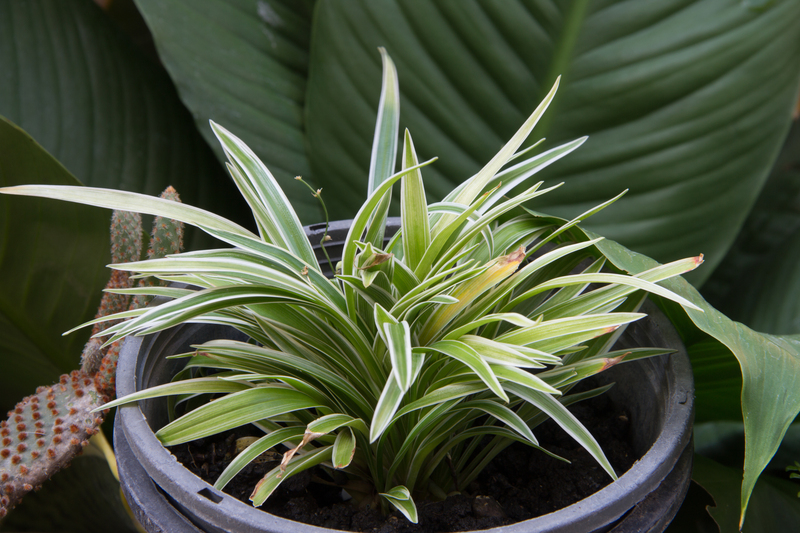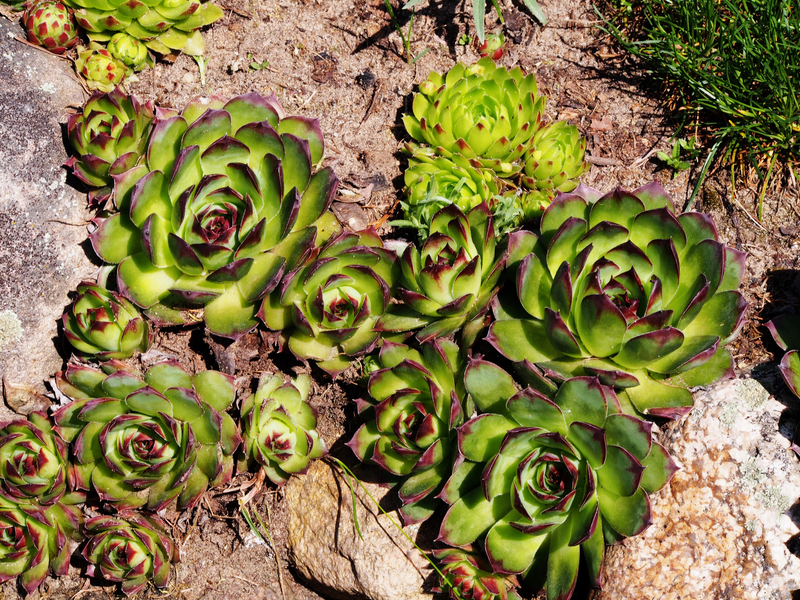Crafting the Perfect Environment for Orchids
Posted on 04/09/2025
Crafting the Perfect Environment for Orchids: A Comprehensive Guide
Orchids have mesmerized garden enthusiasts and botanists for centuries with their exotic beauty and delicate structure. However, nurturing these stunning plants often proves challenging for beginners and seasoned growers alike. Creating the ideal environment for orchids is the key to unlocking their potential and allowing them to thrive year-round. In this in-depth article, you'll discover how to cultivate an optimal orchid habitat, whether you grow indoors or outdoors, to enjoy vibrant blooms and healthy foliage.

Understanding Orchids and Their Natural Habitat
Orchids are among the largest and most diverse plant families in the world. They are found in nearly every continent except Antarctica, ranging from luxurious tropical jungles to windswept alpine meadows. To craft the perfect orchid environment, it's essential to consider their native growing conditions.
- Epiphytic Orchids: Most popular varieties (like Phalaenopsis, Cattleya, and Dendrobium) grow on trees in humid forests, absorbing moisture and nutrients from the air and rain.
- Terrestrial Orchids: Some species live in soil, thriving in well-aerated, nutrient-rich substrates.
- Environmental Needs: All orchids require a delicate balance of light, temperature, humidity, watering, and air movement for optimal health.
Why Recreate These Conditions?
Replicating orchids' native environments maximizes growth, enhances blooming, and minimizes stress that makes them vulnerable to pests or disease. Creating an ideal orchid setup is as much about art as science, harmonizing living conditions tailored to their unique needs.
Essential Elements of the Best Orchid Environment
To optimize an orchid's habitat, focus on the following key elements:
- Light
- Temperature
- Humidity
- Air Circulation
- Watering and Drainage
- Potting Media and Container Selection
1. Providing the Right Light for Orchids
Light is arguably the most important factor for successful orchid care. Orchids generally prefer bright, indirect sunlight.
- Intensity: Morning sunlight or light filtered through sheer curtains is ideal. Avoid harsh midday sun which can scorch leaves.
- Direction: An east-facing window is perfect for many indoor orchids, while south or west can work with filtered shade.
- Signs of Proper Light: Healthy, green leaves with a subtle yellow tint. Too much light causes leaf burn; too little yields dark, limp leaves and poor blooming.
- Artificial Lighting: For rooms lacking windows, grow lights (like fluorescent or LED) can provide the necessary spectrum. Place lights 6-12 inches above plants for 12-16 hours daily in winter.
2. Achieving the Best Temperature and Humidity
Orchids thrive with warm days and cooler nights, mimicking tropical forest canopies. The ideal orchid temperature range is:
- Daytime: 70-85?F (21-29?C)
- Nighttime: 55-65?F (13-18?C)
Nighttime temperature drops are vital for triggering flowering in many popular species, especially Phalaenopsis orchids.
Maintaining Optimal Orchid Humidity
Most orchids prefer humidity levels between 50%-70%. Low indoor humidity, especially during winter, can hinder growth and flower production.
- Use a Humidity Tray: Fill a shallow tray with pebbles and water, placing the orchid pots above. As water evaporates, humidity rises around the plants.
- Group Plants Together: Clustering orchids increases local humidity naturally.
- Mist Regularly: Lightly spray the orchid leaves in the morning to avoid fungus from excess moisture at night.
- Room Humidifier: For consistent humidity, use an ultrasonic or evaporative humidifier, especially in air-conditioned or heated spaces.
3. Ensuring Proper Air Circulation
A stagnant environment encourages fungus, bacteria, and pest problems. Orchids need fresh, gentle air movement around them. Some tips:
- Use a Small Fan: Place a low-speed oscillating fan nearby, not directly on the plants.
- Open Windows: When weather permits, allow natural breezes to circulate the room.
- Avoid Drafts: Strong cold drafts can shock orchids, so avoid positioning them near frequently opened doors or direct AC vents.
4. Mastering Orchid Watering and Drainage
Overwatering is the most common cause of orchid decline. Remember, many orchids are epiphytes in nature; their roots need to breathe.
- Check Media Before Watering: Water only when the top inch of the potting mix is dry.
- Water Thoroughly: Drench the roots so excess water runs from the pot's drainage holes.
- Right Water Quality: Use room-temperature rainwater, distilled, or filtered tap water; avoid softened or highly mineralized water.
- Avoid Letting Roots Sit in Water: Always empty saucers and trays after watering.
5. Choosing the Best Potting Medium and Containers for Orchids
Choosing a well-draining potting medium and container is essential for healthy roots. Common orchid potting media include:
- Fir Bark Chips: Excellent aeration, but decomposes over time.
- Sphagnum Moss: High water retention, suitable for younger or recovering orchids.
- Coconut Husk and Charcoal: Help with moisture and reduce rot.
- Leca Balls (Expanded Clay): Used for semi-hydroponic growing.
Plastic or clay orchid pots with extra drainage holes are best, preventing the roots from becoming too wet and promoting a healthy orchid environment.
Creating an Indoor Orchid Sanctuary
For many enthusiasts, growing orchids indoors is the practical option. Here's how to build the perfect environment for your orchids at home:
Selecting the Right Orchid Species
Popular varieties for home growing include:
- Phalaenopsis (Moth Orchid): Thrives in typical household conditions, blooms for months.
- Dendrobium: Requires higher light, likes a humidity boost.
- Cattleya: Needs very bright light and drying between watering.
- Oncidium: Prefers moderate to bright light and regular feeding.
Positioning Your Orchids
- Keep orchids close to bright, indirect light.
- Use adjustable shelves to maximize vertical growing space.
- Employ humidity trays, pebble saucers, or room humidifiers as necessary.
Routine Maintenance for Indoor Orchid Health
- Fertilizing: Use a balanced orchid fertilizer, diluted to half strength, every 2-4 weeks during growth.
- Repotting: Refresh the medium every 1-2 years or when roots crowd the pot.
- Pest Monitoring: Watch for mealybugs, spider mites, and fungal spots. Early treatment prevents spread.
- Leaf Cleaning: Gently wipe dust with a damp cloth to keep photosynthesis efficient.
Crafting the Perfect Orchid Environment in Greenhouses
Greenhouses provide an excellent controlled setting for orchids, enabling more precise environmental adjustments and larger collections. Here's how to maximize your greenhouse for ideal orchid growing conditions:
- Shading: Install shade cloth to filter sunlight, preventing overheating and burning.
- Ventilation: Use fans and roof vents to regulate temperature and air movement; prevent heat buildup in summer.
- Humidity Control: Misting systems or wet walls help achieve constant high humidity.
- Temperature Management: Use heaters for cool nights and thermostatic controls for consistent conditions.
Seasonal Adjustments in the Greenhouse Orchid Environment
Orchids may require different care through the year:
- In summer, prevent overheating and sunburn with additional shade and ventilation.
- In winter, supplement with artificial lighting and increase humidity if heaters dry out the air.
- Monitor for pests and fungal diseases that thrive with increased warmth and moisture.
Outdoor Orchid Growing: Crafting Natural Microclimates
If your climate allows, orchids can also flourish outdoors, especially in USDA zones 9-12. Here's how to create a suitable outdoor orchid environment:
- Choose a shaded spot protected from direct midday sun and strong wind.
- Grow epiphytic orchids in baskets or attach them to trees mimicking natural growth.
- Water deeply but allow roots to dry between watering, especially during rainy seasons.
- Mulch terrestrial orchids lightly for insulation and moisture, but avoid soggy soil.
Protect outdoor orchids from unexpected cold snaps, heavy rains, and direct sunlight. Move container-grown orchids indoors during extreme weather.
Troubleshooting Environmental Issues with Orchids
Even with the best care, orchids may show signs of stress. Here's how to interpret their signals to adjust their environment:
- Yellowing Leaves: Overwatering, poor drainage, or nutrient deficiency.
- Leaf spotting or mold: Excessive humidity or lack of air movement. Increase ventilation and allow leaves to dry.
- Non-flowering orchids: Insufficient light or lack of nighttime cooling. Adjust location or temperature range.
- Wrinkled or shrinking pseudobulbs: Underwatering or inadequate humidity.
- Root rot: Soggy medium or standing water. Repot with fresh, well-draining mix.

Advanced Tips for a Professional-Quality Orchid Environment
- Monitor and Log Conditions: Use a digital thermo-hygrometer to track temperature and humidity, and adjust care as seasons change.
- Rotate Orchids: Move plants occasionally to provide even light exposure.
- Quarantine New Additions: Isolate new orchids for several weeks to prevent introducing pests or diseases.
- Experiment with Natural "Wet-Dry" Cycles: Allow some orchids, like Cattleya, to dry between watering, mimicking their native habitat.
If you master the nuances of orchid environmental conditioning, you can coax even the most reluctant varieties into spectacular display.
Conclusion: Unleash the Full Potential of Your Orchids
Crafting the perfect environment for orchids is both a science and a creative pursuit. With attention to light, temperature, humidity, air movement, watering, and growing media, anyone can succeed in transforming their home, greenhouse, or garden into a lush orchid haven. Observe your plants, adjust their care as needed, and enjoy the journey as your orchids reward you with their breathtaking flowers and striking foliage all year round.
Ready to elevate your orchid growing skills? Share this guide and inspire fellow enthusiasts to create their own perfect orchid environment for years of enjoyment and success!



